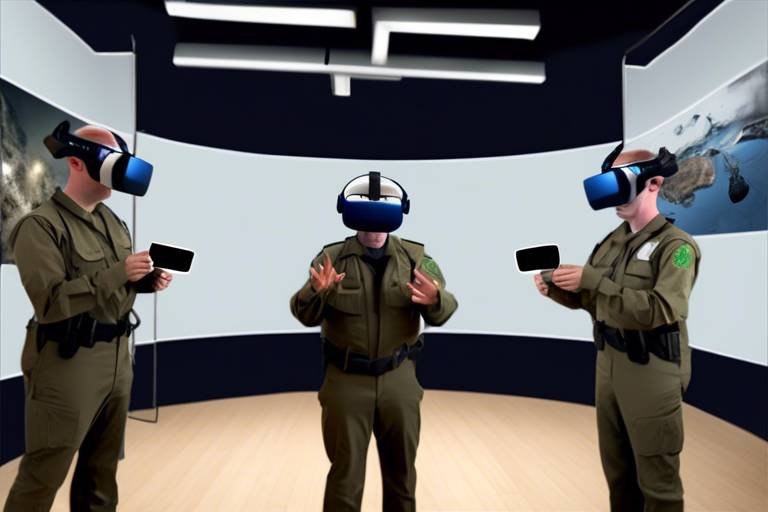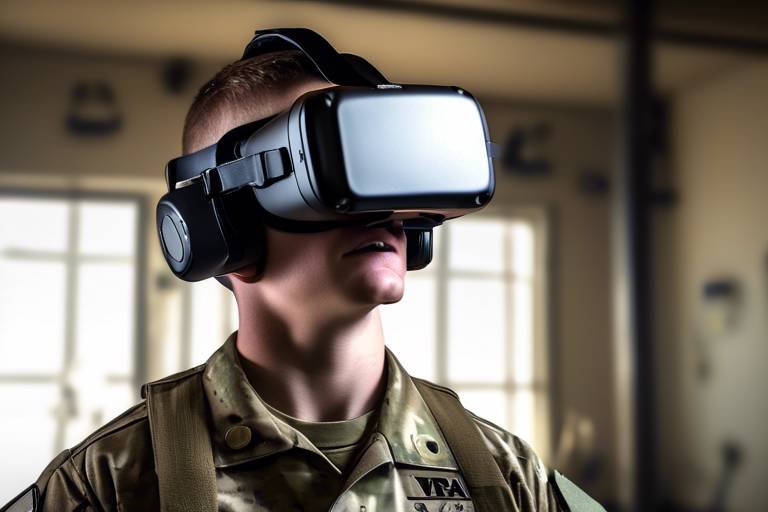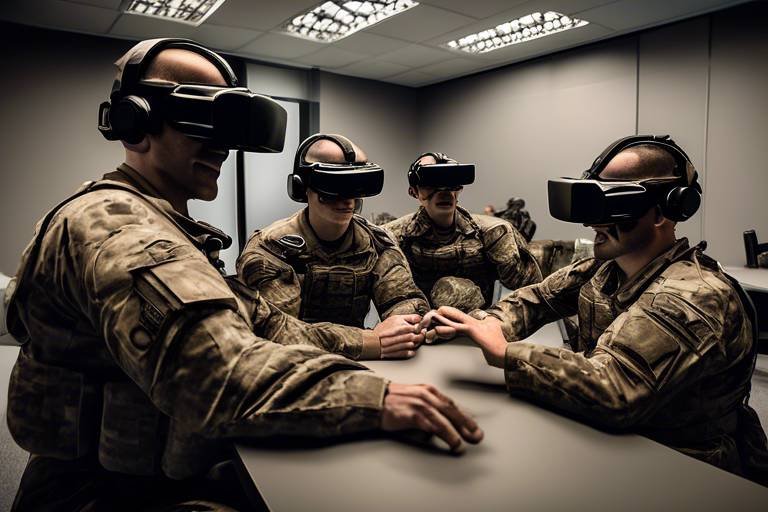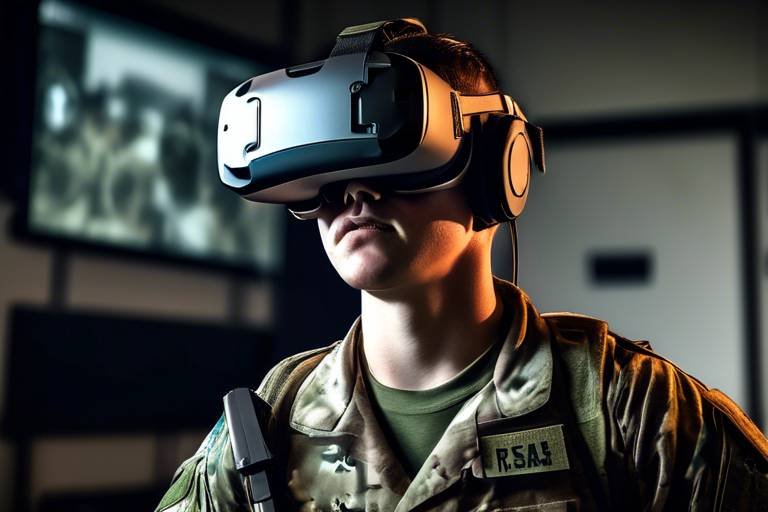The Benefits of VR for Simulating Tactical Operations
In recent years, Virtual Reality (VR) has emerged as a groundbreaking tool in various fields, and its impact on tactical operations is nothing short of revolutionary. Imagine a world where military and law enforcement personnel can train in hyper-realistic environments without the risks associated with live exercises. This innovative technology is transforming how these professionals prepare for real-world challenges, making training not only safer but also significantly more effective. By immersing individuals in lifelike scenarios, VR enhances their skills, decision-making capabilities, and overall operational efficiency. In this article, we will delve into the myriad benefits of VR in tactical operations, exploring how it enhances training experiences, improves decision-making skills, and provides cost-effective solutions.
One of the most compelling advantages of VR is its ability to provide immersive training environments that closely mimic real-world situations. Picture this: a police officer facing a high-stakes hostage situation or a soldier navigating through a complex urban battlefield—all within a safe, controlled VR setting. This type of training allows personnel to practice critical skills without the fear of real-life consequences. It leads to better preparation and increased confidence when they eventually face actual situations. The psychological benefits of training in such environments cannot be overstated; individuals often report feeling more competent and ready to act when confronted with high-pressure scenarios.
With VR, tactical teams can engage in highly realistic simulations that replicate various environments and challenges. This technology helps improve adaptability and problem-solving skills under pressure. For instance, a tactical team can practice responding to an active shooter scenario in a virtual mall, navigating through obstacles, and coordinating their actions in real-time. Such experiences are invaluable, as they teach teams how to think on their feet and make quick decisions. The more realistic the training, the better prepared they are for the unpredictability of real-life operations.
VR can also be utilized to create high-stress scenarios that help individuals learn to manage anxiety and maintain focus. Think of it as a mental gym where personnel can build their resilience. This training is crucial for performing effectively in critical situations. By exposing trainees to controlled stressors, VR not only prepares them for the worst but also equips them with coping strategies to handle anxiety. The ability to practice in a safe environment allows for trial and error, which is essential for learning.
By gradually introducing stress-inducing elements in a controlled VR environment, personnel can develop coping strategies, enhancing their performance during actual operations. For example, a soldier might first experience a low-stress simulation and, as their skills improve, progress to more intense scenarios. This gradual exposure helps build confidence and competence, ensuring that when the time comes to act, they are not only ready but also capable of performing under pressure.
Post-simulation debriefing is another significant advantage of VR training. Following a simulation, teams can analyze their responses and decisions, fostering a deeper understanding of their actions and areas for improvement. This reflective practice is essential for growth; individuals can see where they excelled and where they need to focus their efforts. The ability to review their performance in a constructive manner ensures continuous learning and development.
VR simulations facilitate improved coordination and communication among team members, essential for successful tactical operations. Practicing together in a virtual environment strengthens team dynamics, allowing members to develop a shared understanding of roles and responsibilities. When every team member knows their part and how to communicate effectively, the entire operation becomes more cohesive and efficient. This kind of training can lead to a significant reduction in errors during actual missions.
Implementing VR technology can also reduce training costs associated with traditional methods, such as live exercises and equipment usage, making it a budget-friendly alternative for organizations. The initial investment in VR systems can pay off quickly as organizations save on resources typically consumed during live training exercises.
VR training minimizes the need for physical resources, such as vehicles and ammunition, allowing teams to focus on skill development without incurring excessive expenses. This is particularly beneficial for organizations with limited budgets, as they can maximize their training capabilities without compromising quality.
Another remarkable feature of VR is the scalability of training programs. Virtual training can be easily adjusted to accommodate varying group sizes and skill levels, ensuring that all personnel receive appropriate training tailored to their needs. Whether training a small elite unit or a large group of recruits, VR can adapt to fit the situation, providing a customized learning experience for everyone involved.
VR enhances decision-making capabilities by immersing users in complex scenarios that require quick thinking and strategic planning, ultimately leading to better outcomes in real-life situations. The interactive nature of VR forces participants to engage actively with the scenario, making critical choices that can have significant consequences.
Participants receive immediate feedback during VR simulations, allowing them to learn from mistakes and refine their decision-making processes effectively. This real-time feedback loop is invaluable; it helps individuals understand the implications of their actions and encourages them to think critically about their choices.
The ability to review and analyze tactical responses in VR scenarios helps individuals and teams understand their strengths and weaknesses, contributing to overall operational improvement. By examining their performance and discussing what worked and what didn't, teams can continuously evolve and enhance their operational strategies.
- What are the primary benefits of using VR for tactical training? VR provides immersive experiences, enhances decision-making skills, and reduces training costs.
- How does VR improve team coordination? VR simulations allow teams to practice together in a controlled environment, strengthening communication and understanding of roles.
- Is VR training cost-effective? Yes, it minimizes the need for physical resources and can be scaled to accommodate different training needs.

Enhanced Training Experiences
Virtual Reality (VR) has revolutionized the way tactical operations training is conducted, creating an immersive experience that traditional methods simply cannot match. Imagine stepping into a world where you can engage in realistic combat scenarios without the inherent risks. With VR, personnel can practice their skills in a safe, controlled environment, which leads to a multitude of benefits. This not only enhances their preparation but also boosts their confidence when they eventually face real-life situations.
One of the most significant advantages of VR in training is the ability to simulate various environments and scenarios. Whether it's navigating through a dense urban landscape or conducting operations in a remote wilderness, VR can replicate these settings with astonishing accuracy. This level of realism allows trainees to experience the sights, sounds, and even the stress of real-world operations, which is invaluable for skill development. For example, a soldier can practice urban warfare techniques in a virtual city, honing their decision-making and tactical skills without the dangers associated with live exercises.
Moreover, VR training can be tailored to meet the specific needs of different units or individuals. This personalization ensures that every participant receives the most relevant training possible. For instance, law enforcement officers might focus on de-escalation techniques in a simulated hostage situation, while military personnel could engage in combat simulations that emphasize teamwork and strategy. This adaptability makes VR an essential tool for diverse training requirements.
Furthermore, VR training can be repeated as often as necessary, allowing personnel to refine their skills continually. The ability to practice repeatedly in a virtual setting without the wear and tear on physical resources is a game-changer. Trainees can go through the same scenario multiple times, learning from their mistakes and improving their performance with each iteration. This repeated exposure to various tactical situations builds muscle memory, which is crucial in high-pressure environments.
Additionally, the immersive nature of VR training fosters a deeper emotional connection to the training material. When individuals are fully engaged in a scenario, they are more likely to remember the lessons learned and apply them in real situations. The combination of visual, auditory, and kinesthetic stimuli enhances retention, making VR training not just effective but also engaging.
In conclusion, the enhanced training experiences provided by VR technology are transforming how tactical operations are conducted. By offering realistic simulations, personalized training, repeatability, and emotional engagement, VR equips military and law enforcement personnel with the tools they need to succeed in high-stakes environments. As we continue to explore the potential of VR, it is clear that its role in training will only become more prominent in the future.
- What is the main benefit of using VR for training? The primary benefit is the ability to simulate realistic scenarios in a safe environment, allowing personnel to practice and enhance their skills without real-world risks.
- Can VR training be customized? Yes, VR training can be tailored to meet the specific needs of different units or individuals, ensuring relevant and effective training.
- How does VR training improve decision-making skills? VR immerses users in complex scenarios that require quick thinking and strategic planning, leading to better decision-making in real-life situations.
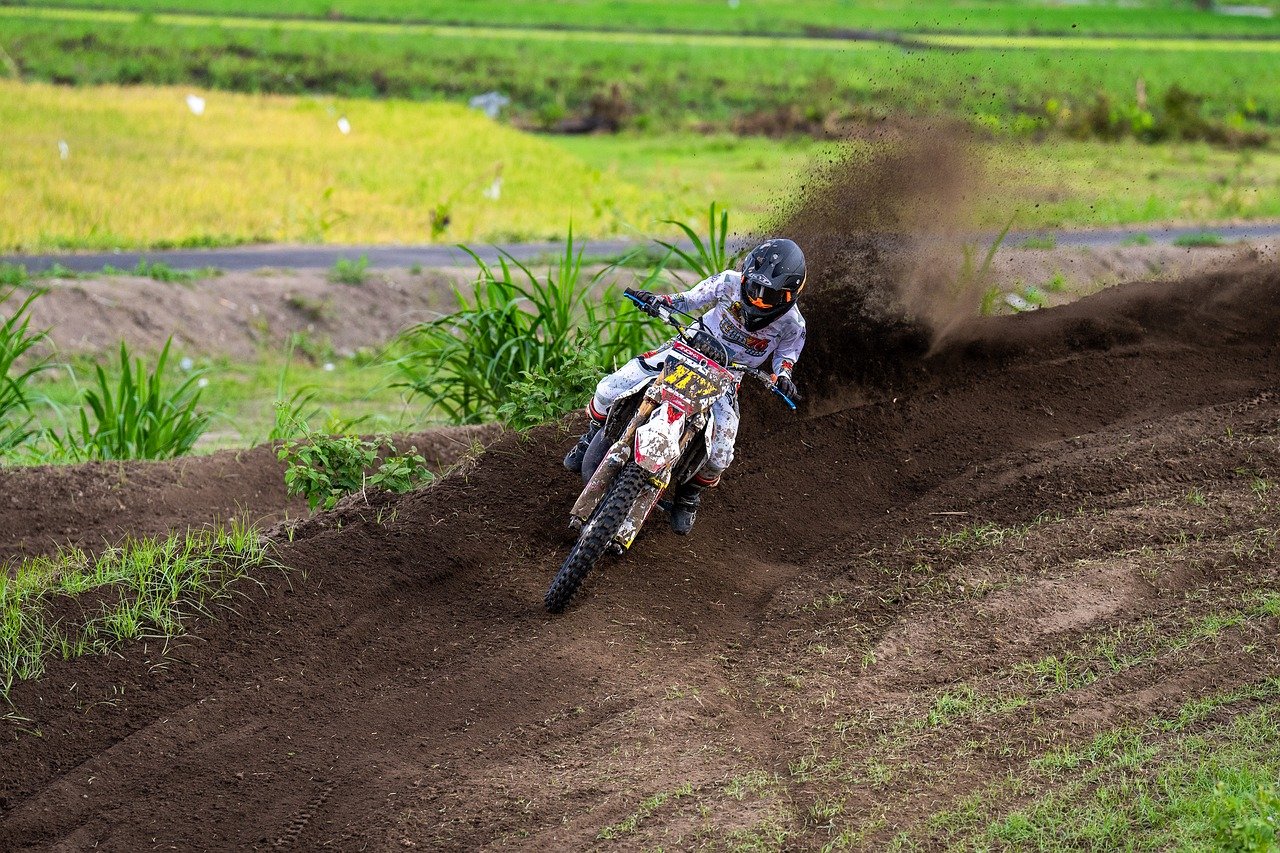
Realistic Scenario Simulations
The advent of virtual reality (VR) technology has revolutionized the way tactical teams approach training and operational readiness. Imagine stepping into a virtual world where every detail mimics reality—sounds, sights, and even the pressure of high-stakes situations. This is not just a fantasy; it's the power of VR in creating . These simulations allow military and law enforcement personnel to engage in environments that closely resemble the challenges they will face in the field. From urban warfare to hostage rescue operations, VR can replicate a multitude of scenarios, giving teams the chance to practice their skills in a controlled yet immersive setting.
One of the most significant advantages of these simulations is the ability to enhance adaptability and problem-solving skills. When teams are placed in dynamic environments where conditions can change in an instant, they learn to think on their feet. For instance, a team might start a simulation with a specific objective, only to encounter unexpected obstacles that require immediate adjustments to their strategy. This kind of training fosters a mindset of flexibility, which is crucial in real-world operations where the unexpected is often the norm.
Moreover, VR technology allows for the creation of various environments without the logistical challenges of real-world training exercises. Consider the following advantages:
- Diverse Scenarios: Teams can practice in multiple settings, from dense forests to urban landscapes, without needing to physically transport personnel and equipment.
- Safe Environment: Mistakes made in a virtual setting do not have real-world consequences, allowing personnel to learn and grow without the fear of failure.
- Replayability: Scenarios can be repeated as many times as necessary, enabling teams to refine their tactics and improve their performance.
Furthermore, the use of VR for scenario simulations is not limited to just tactical maneuvers. It can also encompass interpersonal interactions and decision-making processes that are critical in high-pressure situations. For example, a simulation can involve negotiating with a hostage-taker while simultaneously managing the safety of civilians. This multifaceted approach helps personnel develop comprehensive skills that extend beyond mere physical training.
As teams engage in these realistic simulations, they can also benefit from post-simulation debriefing. This process allows them to analyze their decisions and actions critically. By reviewing what went well and what could be improved, teams can gain valuable insights that enhance their overall tactical effectiveness. The combination of immersive training and thorough analysis makes VR an invaluable tool in preparing personnel for the complexities of real-world operations.

Stress Management Training
In the high-stakes world of tactical operations, the ability to manage stress is not just a skill; it's a lifeline. Virtual reality (VR) technology offers a groundbreaking approach to stress management training that immerses personnel in simulated high-pressure environments. Imagine stepping into a scenario where every decision counts, and the stakes feel as real as they do in the field. This immersive experience allows individuals to confront their fears and anxieties in a controlled setting, paving the way for enhanced performance during actual operations.
One of the most significant advantages of VR for stress management training is the controlled exposure to stressors. By gradually introducing participants to increasingly challenging scenarios, VR helps them develop effective coping strategies. For instance, a trainee might first experience a low-stress simulation, such as a routine patrol, before advancing to more intense situations like hostage rescues or active shooter scenarios. This step-by-step approach fosters resilience, enabling individuals to maintain composure when the pressure is on.
Furthermore, the ability to debrief and analyze these simulations is crucial. After each VR session, teams can engage in post-simulation debriefing, where they review their actions, decisions, and emotional responses. This reflective practice not only enhances self-awareness but also cultivates a deeper understanding of how stress affects performance. By examining their experiences in a safe environment, personnel can identify areas for improvement and refine their strategies for managing stress in real-world situations.
Ultimately, the goal of stress management training through VR is to equip personnel with the tools they need to thrive under pressure. By fostering a culture of continuous learning and adaptation, organizations can ensure that their teams are not just prepared for the unexpected, but are also able to excel when faced with adversity.
- How does VR training differ from traditional training methods?
VR training provides immersive, realistic scenarios that allow for hands-on experience without the risks associated with live training exercises.
- Can VR training be customized for different skill levels?
Yes, VR programs can be tailored to meet the specific needs and skill levels of various personnel, ensuring effective training for everyone.
- What are the long-term benefits of using VR for stress management?
Long-term benefits include improved decision-making, enhanced team coordination, and greater overall resilience in high-stress situations.
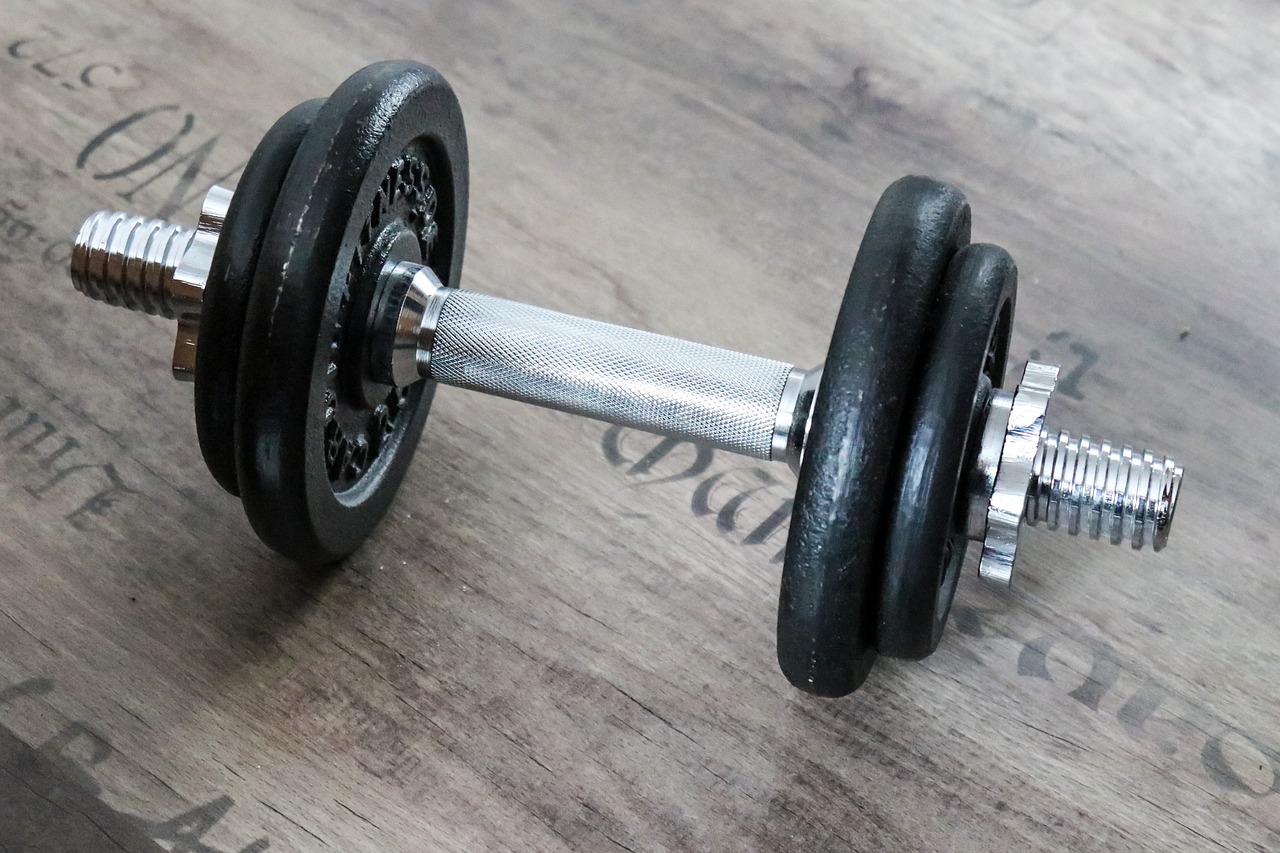
Controlled Exposure to Stressors
In the realm of tactical training, the concept of is paramount. Imagine preparing for a high-stakes operation where the pressure can feel like a weight on your shoulders. VR technology creates a unique opportunity to simulate these high-stress scenarios in a safe, controlled environment. This method allows military and law enforcement personnel to face challenges that mimic real-life situations without the inherent risks. By gradually introducing stress-inducing elements, trainees can experience the adrenaline and urgency of critical moments while still being shielded from real-world consequences.
Consider this: when you encounter a stressful situation in reality, your body reacts instinctively—your heart races, your mind races, and sometimes, clarity can get lost in the chaos. However, with VR, you can practice managing those physiological responses. For instance, a trainee might face a scenario where they must make split-second decisions while under simulated gunfire. This exposure helps them learn how to regulate their emotions, maintain focus, and execute their training effectively, all while receiving real-time feedback on their performance.
Furthermore, the beauty of controlled exposure lies in its gradual approach. Training can start with low-stress scenarios and progressively introduce more complex and demanding situations. This method builds resilience and equips personnel with essential coping strategies. For example, a training program might begin with a simple decision-making exercise and evolve into a full-scale tactical simulation that includes unexpected obstacles and time constraints. This structured progression ensures that individuals are not overwhelmed but rather prepared to tackle increasingly challenging environments.
Another significant aspect is the debriefing process that follows each simulation. After navigating through a stressful scenario, teams can engage in discussions to analyze their actions and reactions. This reflective practice not only enhances individual learning but also fosters a culture of collaboration and improvement within the team. By understanding what worked and what didn’t, personnel can refine their strategies and better prepare for real-life operations.
In summary, controlled exposure to stressors through VR training is a game-changer for tactical operations. It not only prepares personnel for the realities of their roles but also enhances their ability to perform under pressure. With each simulation, they become more adept at managing stress, making informed decisions, and ultimately, achieving success in critical situations.
- What is controlled exposure to stressors in VR training? Controlled exposure to stressors involves gradually introducing realistic stress-inducing scenarios in a virtual environment to help trainees develop coping strategies and improve their performance under pressure.
- How does VR help in managing stress during training? VR training allows personnel to experience high-stress situations in a safe setting, enabling them to learn how to regulate their emotions and maintain focus while receiving immediate feedback.
- Can controlled exposure in VR replace traditional training methods? While VR offers unique advantages, it is best used as a complementary tool alongside traditional training methods to provide a well-rounded learning experience.
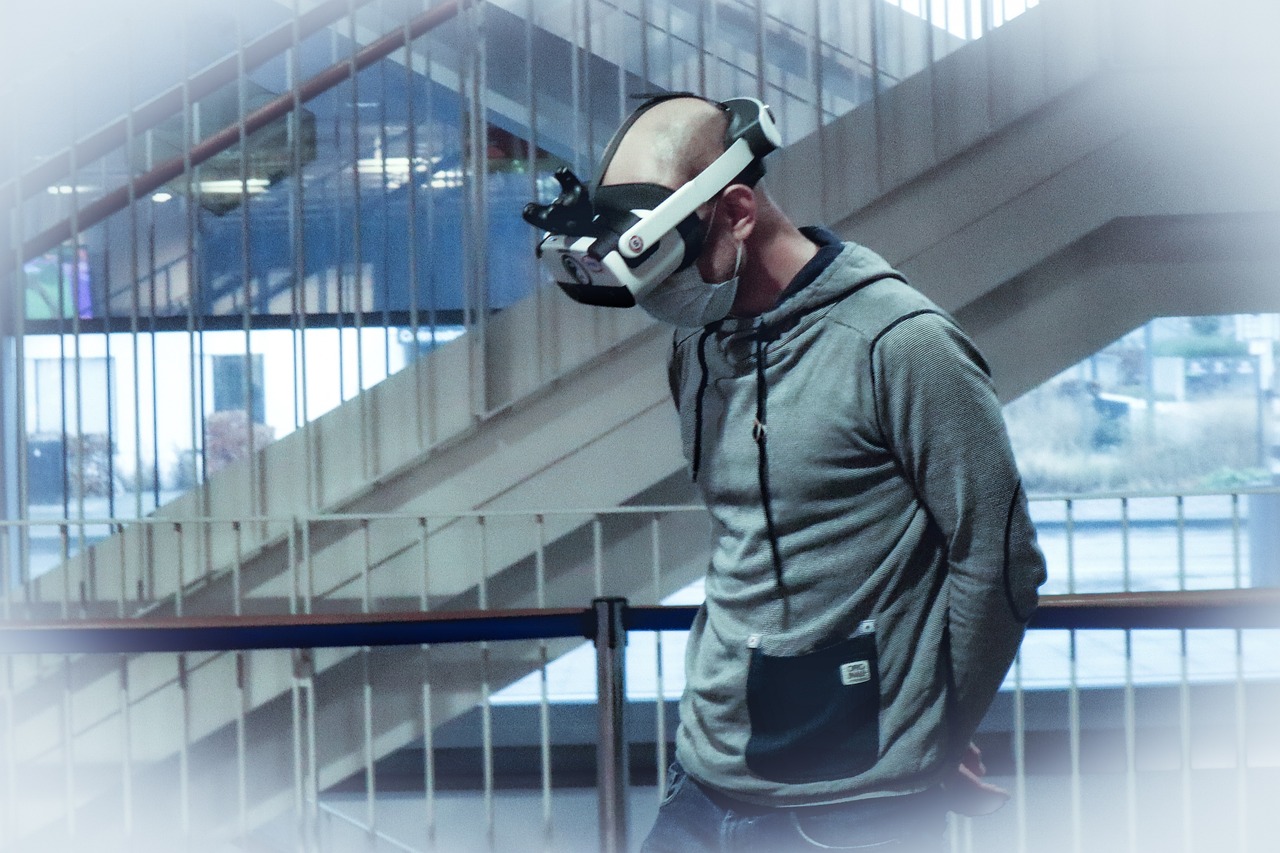
Debriefing and Analysis
After a rigorous VR training session, play a crucial role in solidifying the lessons learned. This step is not just a formality; it's an essential process that allows tactical teams to dissect their performance in detail. Imagine finishing a challenging video game level—what do you do next? You reflect on your strategies, the mistakes you made, and how you can improve for the next time. In the context of tactical operations, this reflection is vital.
During debriefing sessions, teams gather to discuss their experiences in the VR simulation. They analyze their decisions, the effectiveness of their communication, and the overall execution of their tactical maneuvers. This collaborative environment fosters a sense of camaraderie and shared responsibility. By openly discussing what worked and what didn’t, team members can gain valuable insights into their individual and collective performance.
One of the most powerful aspects of this analysis is the ability to use recorded data from the VR simulations. Just like a sports team reviewing game footage, tactical teams can watch their simulations to identify patterns in their behavior. They can assess:
- Decision-making processes: Were choices made under pressure effective?
- Team dynamics: How well did team members communicate and coordinate?
- Adaptability: Did the team adjust strategies based on changing scenarios?
By integrating these reflections into future training, personnel can continuously improve their skills and strategies. This cycle of debriefing and analysis not only enhances individual capabilities but also strengthens the entire team's operational effectiveness. In essence, it’s about transforming experiences into learning opportunities, ensuring that every simulation contributes to a more prepared and cohesive unit.
Q1: How does VR training differ from traditional training methods?
A1: VR training provides immersive experiences that replicate real-world scenarios, allowing for safe practice and immediate feedback, unlike traditional methods that may lack realism.
Q2: Can VR training be customized for different tactical scenarios?
A2: Absolutely! VR simulations can be tailored to simulate various environments and challenges, making them versatile for different training needs.
Q3: Is VR training cost-effective?
A3: Yes, it reduces costs associated with physical resources and allows for scalable training programs, making it budget-friendly for organizations.
Q4: How does debriefing enhance the learning process?
A4: Debriefing allows teams to analyze their performance, discuss improvements, and learn from their experiences, leading to better preparedness for real-life situations.
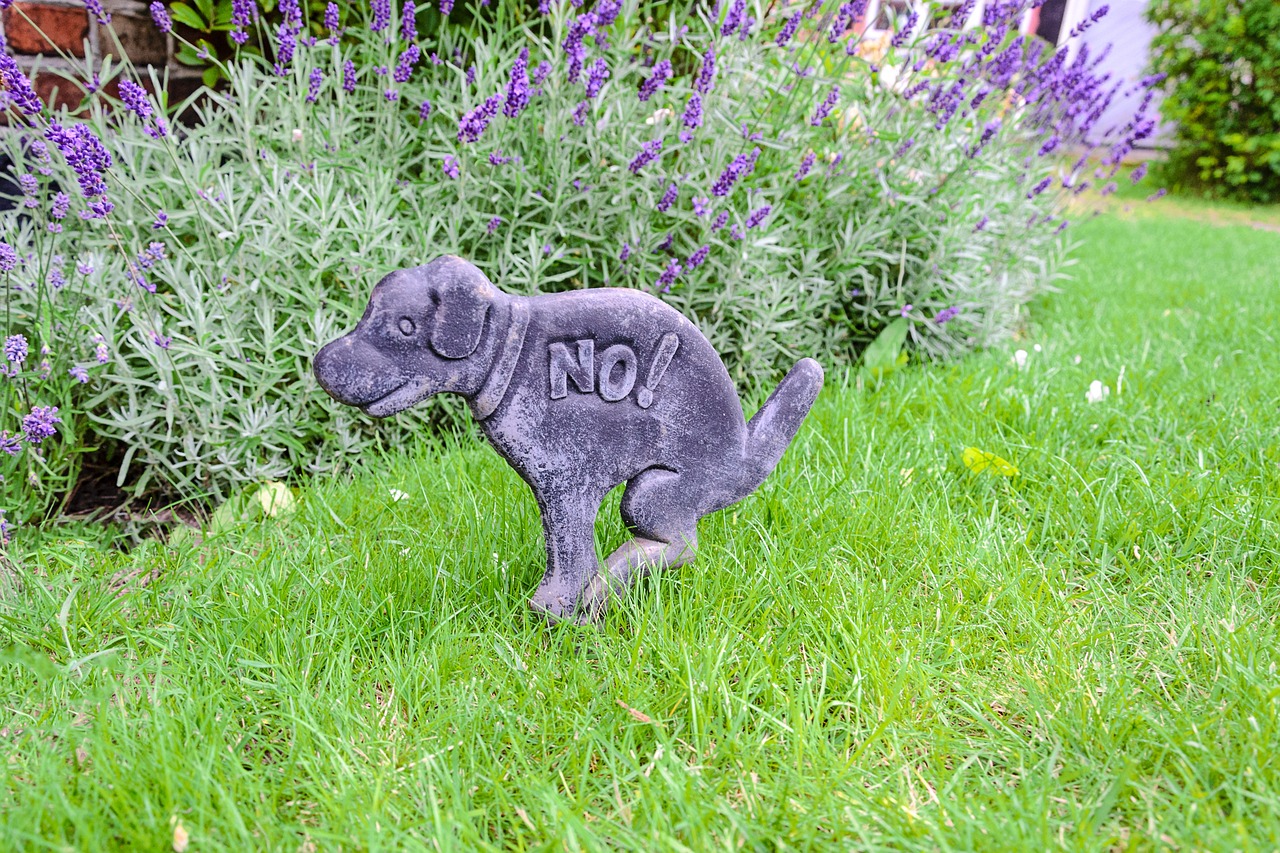
Team Coordination and Communication
In the fast-paced world of tactical operations, effective team coordination and communication can be the difference between success and failure. Virtual Reality (VR) simulations provide an exceptional platform for enhancing these critical skills. Imagine a scenario where a team is navigating a complex urban environment, facing unexpected challenges and needing to make split-second decisions. With VR, they can practice these scenarios repeatedly, honing their communication skills and developing a shared understanding of their roles in a safe, controlled environment.
One of the key advantages of VR is its ability to create realistic, immersive environments where team members can engage in dynamic interactions. During these simulations, personnel can practice verbal and non-verbal communication techniques, ensuring that everyone is on the same page. For instance, they can experiment with different communication styles and see how these affect their teamwork. This is particularly valuable in high-stress situations where clarity and quick responses are essential.
Moreover, VR allows teams to engage in role-playing exercises that mimic real-life scenarios. This not only builds camaraderie but also fosters an understanding of each member's strengths and weaknesses. By working together in these virtual settings, team members learn to anticipate each other's actions, leading to improved synchronization during actual operations. In essence, VR acts as a rehearsal space where teams can refine their strategies and communication techniques before facing real-world challenges.
Another significant benefit is the ability to conduct after-action reviews within the VR environment. After completing a simulation, teams can analyze their performance, discussing what worked well and what didn’t. This reflective practice is crucial for continuous improvement. By reviewing their interactions and decisions, personnel can identify areas for enhancement, ensuring that they are better prepared for future operations.
Furthermore, VR can be tailored to include specific communication challenges that a team might face. For example, a simulation might introduce unexpected variables, such as equipment failures or changes in mission objectives, requiring teams to adapt their communication strategies on the fly. This kind of training prepares them for the unpredictable nature of real-world operations, where clear and concise communication is paramount.
In conclusion, the integration of VR in tactical training not only enhances team coordination and communication but also builds a stronger, more cohesive unit. By immersing teams in realistic scenarios, they can practice, learn, and grow together, ultimately leading to greater operational success. The future of tactical training is here, and it’s virtual!
- What is the main advantage of using VR for team training?
VR offers a safe and controlled environment for teams to practice coordination and communication skills without the risks associated with real-life scenarios. - How does VR improve communication among team members?
VR allows teams to engage in realistic simulations where they can practice verbal and non-verbal communication, leading to better understanding and teamwork. - Can VR training be customized for specific operational needs?
Yes, VR simulations can be tailored to include specific challenges and scenarios relevant to the team’s operational context.

Cost-Effective Training Solutions
This article explores the transformative role of virtual reality (VR) in tactical operations, highlighting its advantages in training, decision-making, and operational efficiency for military and law enforcement personnel.
VR provides immersive training environments that simulate real-world scenarios, allowing personnel to practice skills in a safe setting. This leads to better preparation and increased confidence when facing actual situations.
With VR, tactical teams can engage in highly realistic simulations that replicate various environments and challenges. This technology helps improve adaptability and problem-solving skills under pressure.
VR can be used to create high-stress scenarios that help individuals learn to manage anxiety and maintain focus. This training is crucial for performing effectively in critical situations.
By gradually introducing stress-inducing elements in a controlled VR environment, personnel can develop coping strategies, enhancing their performance during actual operations.
Post-simulation debriefing allows teams to analyze their responses and decisions, fostering a deeper understanding of their actions and areas for improvement.
VR simulations facilitate improved coordination and communication among team members, essential for successful tactical operations. Practicing together in a virtual environment strengthens team dynamics.
Implementing VR technology can significantly reduce training costs associated with traditional methods, such as live exercises and equipment usage, making it a budget-friendly alternative for organizations. The initial investment in VR equipment may seem daunting, but the long-term savings often outweigh these costs. For instance, consider the expenses incurred during live training exercises:
| Training Method | Estimated Cost |
|---|---|
| Live Exercises | $50,000+ |
| VR Simulations | $10,000 - $20,000 |
As illustrated, VR training minimizes the need for physical resources, such as vehicles and ammunition, allowing teams to focus on skill development without incurring excessive expenses. Furthermore, VR training programs can be easily scaled to accommodate varying group sizes and skill levels. This flexibility ensures that all personnel receive appropriate training tailored to their needs, making it a versatile solution for organizations of any size.
In addition, VR allows for repetitive practice of critical skills without the logistical challenges and costs associated with traditional training. Imagine being able to run through a high-stakes scenario multiple times in a single day without the need for extensive setup or teardown. This kind of efficiency not only saves money but also maximizes the training time available for personnel.
VR enhances decision-making capabilities by immersing users in complex scenarios that require quick thinking and strategic planning, ultimately leading to better outcomes in real-life situations.
Participants receive immediate feedback during VR simulations, allowing them to learn from mistakes and refine their decision-making processes effectively.
The ability to review and analyze tactical responses in VR scenarios helps individuals and teams understand their strengths and weaknesses, contributing to overall operational improvement.
- What is VR training?
VR training uses virtual reality technology to create immersive training environments for various applications, including military and law enforcement operations. - How does VR training save costs?
VR training reduces the need for physical resources, minimizes travel expenses, and allows for scalable training solutions, ultimately leading to significant cost savings. - Can VR training be tailored to specific needs?
Yes, VR training programs can be customized to meet the unique requirements of different organizations and personnel levels. - Is VR training effective for stress management?
Absolutely! VR can simulate high-stress situations, helping individuals learn coping strategies and improve their performance under pressure.
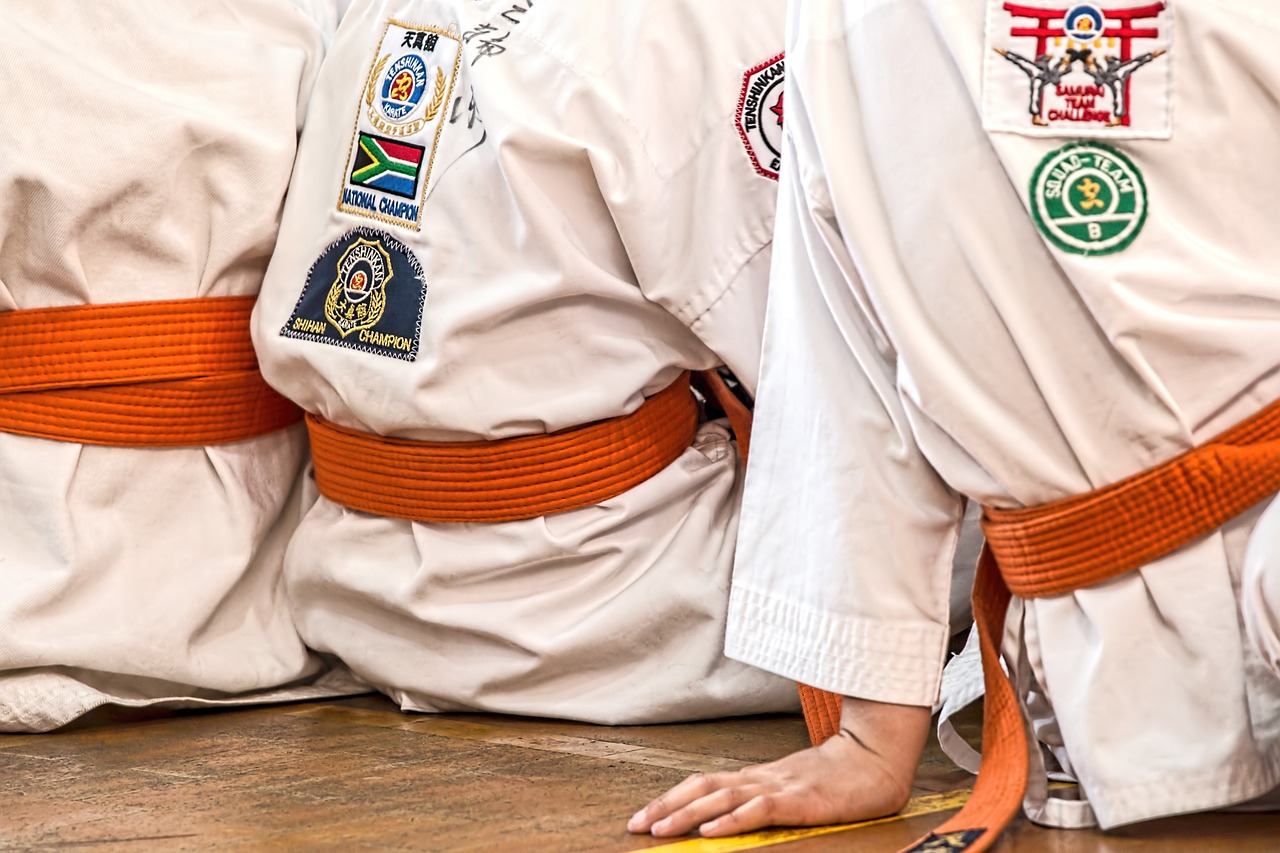
Reduced Resource Consumption
One of the most compelling advantages of utilizing virtual reality (VR) in tactical training is the significant reduction in resource consumption. Traditional training methods often require extensive physical resources, which can be both costly and logistically challenging. For instance, conducting live exercises typically demands a variety of materials, including vehicles, ammunition, and other equipment. This not only strains budgets but also places a burden on inventory management and maintenance. In contrast, VR training allows personnel to engage in realistic scenarios without the need for these physical assets.
By leveraging VR technology, organizations can create immersive environments that replicate real-world challenges while eliminating the associated costs of physical resources. This means that teams can practice their skills in a virtual space, honing their tactical abilities without the wear and tear on equipment or the financial hit of purchasing consumables. Imagine being able to conduct a full-scale operation simulation without ever leaving the training facility—this is the power of VR.
Moreover, the environmental impact is also a consideration. Traditional training often involves fuel consumption, waste generation, and other ecological footprints. With VR, these impacts are drastically minimized. For example, a training session that would typically require multiple vehicles and live ammunition can be executed in a digital format, reducing carbon emissions and other environmental concerns.
To illustrate the differences in resource consumption between traditional training methods and VR, consider the following table:
| Resource Type | Traditional Training | VR Training |
|---|---|---|
| Vehicles | Multiple vehicles required | No vehicles needed |
| Ammunition | Extensive ammunition usage | No ammunition required |
| Personnel Costs | Higher due to logistics | Lower, as training can be conducted in-house |
| Environmental Impact | Significant | Minimal |
In conclusion, the shift to VR training not only enhances the effectiveness of tactical operations but also streamlines resource consumption. Organizations can focus more on skill development and less on logistical challenges, leading to a more efficient training process. This approach not only saves costs but also promotes sustainability, making it a win-win for both the organizations and the environment.
- What are the main benefits of using VR for tactical training? VR offers immersive training experiences, reduced resource consumption, and improved decision-making skills.
- How does VR training compare to traditional training methods? VR training is more cost-effective, environmentally friendly, and allows for realistic scenario simulations without the need for physical resources.
- Can VR training be customized for different skill levels? Yes, VR training programs can be easily scaled and tailored to accommodate varying group sizes and skill levels.

Scalability of Training Programs
One of the most remarkable advantages of virtual reality (VR) in tactical operations is its scalability. Unlike traditional training methods that often require extensive resources and time to accommodate varying group sizes, VR solutions can be easily adjusted to fit the needs of any organization. Imagine a scenario where a military unit needs to train a large group of recruits simultaneously. With VR, multiple users can engage in training exercises in a shared virtual space, regardless of their physical location. This not only saves time but also maximizes the use of available resources.
Furthermore, VR training programs can be tailored to suit different skill levels, ensuring that every participant receives the appropriate level of challenge and instruction. For example, a basic training module can be designed for newcomers, while more advanced simulations can be offered to seasoned personnel looking to refine their skills. This adaptability is essential in maintaining engagement and ensuring that all team members, from novices to experts, can benefit from the training experience.
Moreover, the ease of updating VR training content allows organizations to quickly integrate new tactics, technologies, and operational protocols. As the landscape of tactical operations evolves, so too must training programs. The ability to rapidly deploy new scenarios or modify existing ones means that personnel are always prepared for the latest challenges they may face in the field. This flexibility is a game-changer, as it ensures that training remains relevant and effective.
To illustrate the scalability of VR training programs, consider the following table that outlines the differences between traditional training approaches and VR solutions:
| Aspect | Traditional Training | VR Training |
|---|---|---|
| Group Size | Limited by physical space and resources | Can accommodate unlimited participants virtually |
| Training Customization | Requires significant planning and resources | Easy to tailor for different skill levels |
| Content Updates | Time-consuming and costly | Quickly deploy new scenarios and updates |
| Cost Efficiency | High costs for materials and equipment | Lower costs due to reduced resource consumption |
In conclusion, the scalability of VR training programs not only streamlines the training process but also enhances the overall effectiveness of tactical operations. By providing a versatile, cost-effective, and adaptable training solution, VR technology is paving the way for a new era in military and law enforcement preparedness.
- What is VR training? VR training uses virtual reality technology to create immersive training environments for personnel to practice skills in realistic scenarios.
- How does VR improve training effectiveness? VR enhances training by providing realistic simulations, immediate feedback, and the ability to analyze performance, leading to better preparedness.
- Is VR training cost-effective? Yes, VR training can significantly reduce costs associated with traditional training methods, as it minimizes the need for physical resources.
- Can VR training be customized for different skill levels? Absolutely! VR training programs can be tailored to meet the needs of various skill levels, ensuring all personnel receive appropriate training.
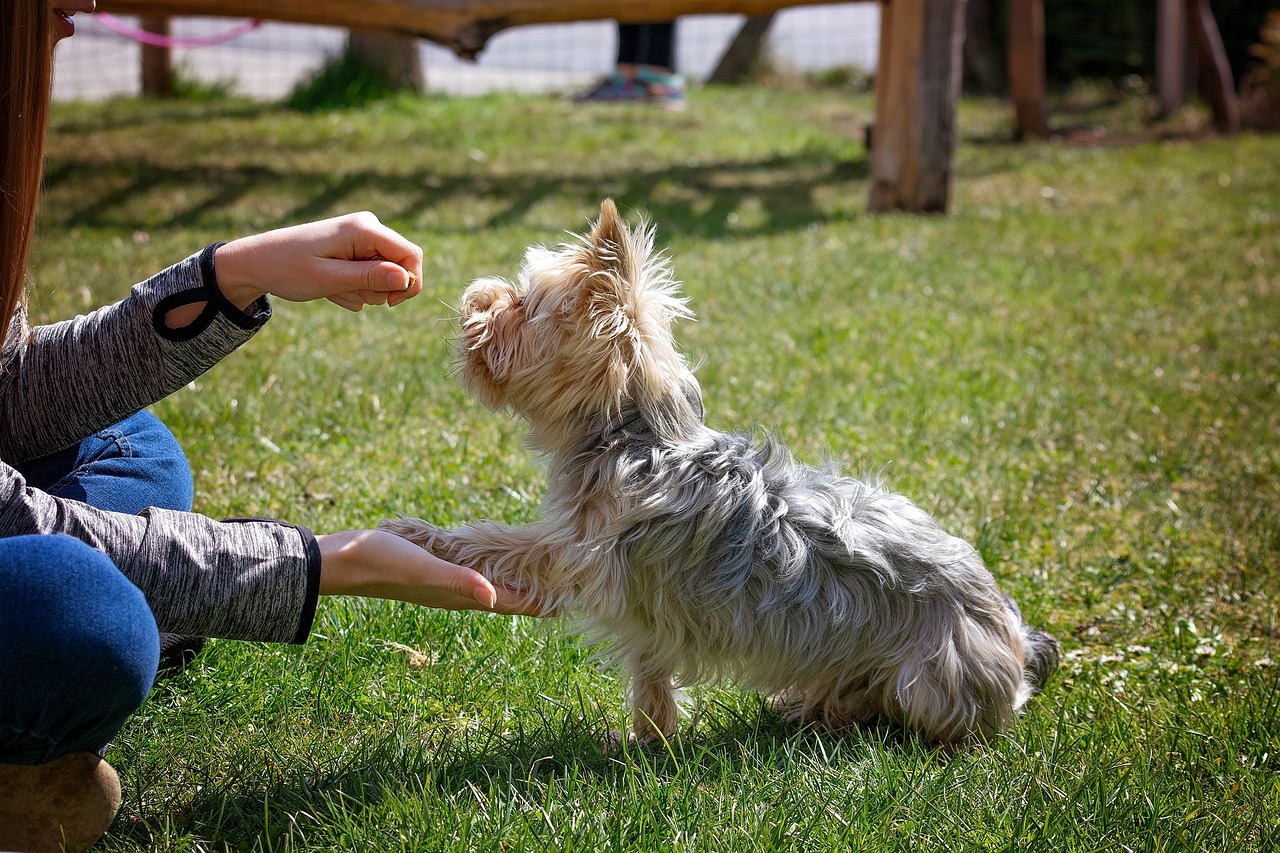
Improved Decision-Making Skills
In the high-stakes world of tactical operations, the ability to make quick and effective decisions can mean the difference between success and failure. Virtual Reality (VR) plays a pivotal role in enhancing these critical decision-making skills. By immersing personnel in complex, realistic scenarios, VR provides an unparalleled training ground where quick thinking and strategic planning are essential. Imagine being in a high-pressure situation where every second counts; VR allows individuals to experience this without the real-world consequences, fostering a learning environment that is both safe and effective.
One of the standout features of VR training is its real-time feedback mechanisms. During simulations, participants receive immediate insights into their actions and decisions. This instant feedback loop is crucial for refining decision-making processes. For instance, if a trainee makes a poor choice during a simulation, they can quickly understand what went wrong and how to correct it. This iterative learning process is akin to a sports team reviewing game footage; each play is analyzed to improve future performance. The same principle applies in VR, where every decision is a learning opportunity.
Furthermore, VR allows for the analysis of tactical responses. After completing a simulation, teams can engage in debriefing sessions where they review their performance. This analysis not only highlights strengths but also uncovers weaknesses in decision-making strategies. For example, if a team consistently struggles with communication during a scenario, this insight can lead to targeted training sessions focused on improving teamwork and coordination. By understanding their tactical responses in a controlled environment, personnel can better prepare for real-life situations where every decision carries weight.
Moreover, VR simulations can be tailored to mimic specific operational challenges that personnel may face. This customization means that training can be as relevant and realistic as possible. When individuals are exposed to scenarios that closely resemble their actual duties, they are more likely to retain information and apply it effectively in the field. This is especially important in tactical operations, where the stakes are high, and the margin for error is slim.
In conclusion, the integration of VR in tactical training not only enhances decision-making skills but also prepares personnel for the unpredictable nature of their roles. By providing a safe environment for practice, real-time feedback, and opportunities for reflective analysis, VR stands out as a transformative tool in developing the next generation of tactical operatives. As we continue to explore the capabilities of this technology, it becomes increasingly clear that the future of training lies in immersive experiences that challenge and strengthen our decision-making abilities.
- How does VR improve decision-making skills?
VR immerses users in realistic scenarios that require quick thinking and strategic planning, allowing them to practice decision-making in a safe environment. - What is the role of real-time feedback in VR training?
Immediate feedback helps participants learn from their mistakes and refine their decision-making processes effectively. - Can VR simulations be customized for specific training needs?
Yes, VR simulations can be tailored to replicate specific operational challenges, ensuring that training is relevant and applicable. - How does debriefing enhance learning after VR simulations?
Debriefing sessions allow teams to analyze their performance, identify strengths and weaknesses, and develop strategies for improvement.

Real-Time Feedback Mechanisms
One of the most remarkable features of virtual reality (VR) training is its . Imagine being in a high-stakes situation where every second counts. In traditional training environments, feedback often comes after the fact, leaving individuals to ponder their decisions without immediate guidance. However, with VR, participants can receive instant feedback as they navigate through complex scenarios. This immediate response helps them to correct mistakes on the fly and adjust their strategies, ultimately leading to a more effective learning experience.
Think of it like playing a video game where you get instant notifications on your performance. If you make a wrong turn or miss an important objective, the game alerts you right away, allowing you to refine your skills in real-time. This concept applies beautifully to tactical operations training. For instance, during a simulated hostage rescue, if an officer makes a poor tactical choice, the system can highlight that decision immediately, enabling them to understand the implications of their actions without waiting for a debriefing session.
Moreover, the feedback can be tailored to suit individual learning curves. Some personnel may require more detailed explanations, while others may benefit from concise, straightforward assessments. VR systems can adjust the type and depth of feedback based on the user's performance, making each training session uniquely beneficial. This personalized approach not only enhances skill acquisition but also boosts confidence levels, as individuals see their progress in real-time.
To illustrate how these mechanisms work, consider the following table that outlines different types of feedback provided during VR training:
| Feedback Type | Description | Impact on Training |
|---|---|---|
| Immediate Performance Analysis | Real-time assessment of actions during simulations. | Helps correct mistakes on the spot, enhancing learning. |
| Visual Cues | Graphical indicators showing success or failure of actions. | Facilitates quick understanding of tactical effectiveness. |
| Audio Feedback | Verbal prompts or alerts regarding performance. | Reinforces learning through auditory reinforcement. |
| Post-Scenario Review | Detailed breakdown of decisions made after the simulation. | Encourages reflection and deeper understanding of tactics. |
In summary, the integration of real-time feedback mechanisms in VR training is a game-changer for tactical operations. By providing immediate, actionable insights, these systems not only enhance learning but also prepare personnel for the unpredictable nature of real-world situations. As they practice, adjust, and improve on the spot, they cultivate a mindset geared towards continuous improvement, which is essential for success in any high-pressure environment.
- What is the main advantage of real-time feedback in VR training?
Real-time feedback allows trainees to correct their mistakes immediately, leading to faster learning and improved performance.
- Can VR training replace traditional training methods?
While VR training offers significant benefits, it is best used as a complement to traditional methods, providing a comprehensive training experience.
- How does VR training improve decision-making skills?
By immersing users in complex scenarios with real-time feedback, VR helps them practice quick thinking and strategic planning under pressure.

Analysis of Tactical Responses
The analysis of tactical responses in virtual reality (VR) scenarios is a game changer for military and law enforcement personnel. Imagine stepping into a world where every decision you make is recorded, scrutinized, and analyzed to enhance your skills. This is not just a futuristic dream; it’s the reality that VR brings to tactical training. By immersing individuals in complex scenarios, VR allows them to experience high-stakes situations without the real-world consequences. Every action can be reviewed, providing invaluable insights into their decision-making processes.
One of the most significant advantages of analyzing tactical responses is the ability to identify patterns in behavior. For instance, participants can discover how they react under pressure, which decisions lead to success, and where they could improve. This is akin to a sports team reviewing game footage to understand their strategies better. Just as athletes learn from their mistakes, tactical teams can refine their approaches based on detailed feedback from VR simulations.
Moreover, the debriefing sessions following these simulations are crucial. They provide a platform for players to discuss their experiences, share insights, and learn from one another. This collaborative environment fosters a culture of continuous improvement. Teams can dissect their actions, evaluate their effectiveness, and strategize on how to handle similar situations in the future. By analyzing both successful and unsuccessful responses, personnel can develop a more nuanced understanding of tactical operations.
To illustrate this further, consider the following table that outlines key aspects of tactical response analysis:
| Key Aspect | Description |
|---|---|
| Performance Metrics | Quantitative measures such as response time, accuracy, and decision-making speed. |
| Behavioral Patterns | Identification of common responses under stress and their outcomes. |
| Team Dynamics | Analysis of communication and coordination among team members during simulations. |
| Feedback Mechanisms | Methods for providing real-time feedback to participants during and after simulations. |
In addition to the quantitative data, the qualitative aspects of analysis are equally important. Participants can express their feelings and thoughts about their performance, which adds a personal dimension to the learning experience. This combination of data-driven insights and personal reflections creates a holistic understanding of tactical responses.
Furthermore, VR technology allows for the creation of scenarios that can be adjusted based on previous analyses. If a team identifies a recurring issue, such as poor communication during a specific type of operation, they can design future simulations that focus on improving that aspect. This adaptability ensures that training remains relevant and effective, addressing the evolving challenges that personnel face in the field.
In conclusion, the analysis of tactical responses through VR not only enhances individual performance but also strengthens team cohesion. By leveraging detailed feedback and collaborative debriefing, personnel can develop a deeper understanding of their tactical skills, leading to improved outcomes in real-world situations. The future of tactical training is here, and it’s more immersive and insightful than ever before.
- What is virtual reality (VR) training?
VR training uses immersive technology to simulate real-world scenarios, allowing personnel to practice skills safely and effectively.
- How does VR improve decision-making skills?
By placing users in complex scenarios that require quick thinking, VR enhances their ability to make strategic decisions under pressure.
- Can VR training be customized for different teams?
Yes, VR training programs can be tailored to meet the specific needs and skill levels of various teams, ensuring relevant and effective training.
- What are the cost benefits of using VR for training?
VR training reduces the need for physical resources and can lower overall training costs compared to traditional methods.
Frequently Asked Questions
- What are the main benefits of using VR for tactical training?
VR offers immersive training experiences that simulate real-world scenarios, enabling military and law enforcement personnel to practice their skills in a safe environment. This leads to enhanced preparation, increased confidence, and the ability to adapt to various challenges effectively.
- How does VR improve stress management during training?
VR can recreate high-stress scenarios, allowing individuals to learn how to manage anxiety and maintain focus under pressure. By gradually introducing stressors in a controlled setting, personnel can develop coping strategies that enhance their performance during actual operations.
- Can VR training be customized for different skill levels?
Absolutely! VR training programs can be easily scaled and tailored to accommodate varying group sizes and individual skill levels. This ensures that every participant receives appropriate training that meets their specific needs.
- What role does VR play in team coordination?
VR simulations foster improved communication and coordination among team members, which is crucial for successful tactical operations. Practicing together in a virtual environment strengthens team dynamics and helps build trust among personnel.
- Is VR training more cost-effective than traditional methods?
Yes, implementing VR technology can significantly reduce training costs associated with traditional methods like live exercises and equipment usage. This makes VR a budget-friendly alternative for organizations looking to optimize their training programs.
- How does VR enhance decision-making skills?
VR immerses users in complex scenarios that require quick thinking and strategic planning. It provides real-time feedback during simulations, allowing participants to learn from their mistakes and refine their decision-making processes for better outcomes in real-life situations.
- What is the importance of debriefing after VR simulations?
Post-simulation debriefing is crucial as it allows teams to analyze their responses and decisions. This reflective practice fosters a deeper understanding of their actions, helping identify strengths and areas for improvement in future operations.


